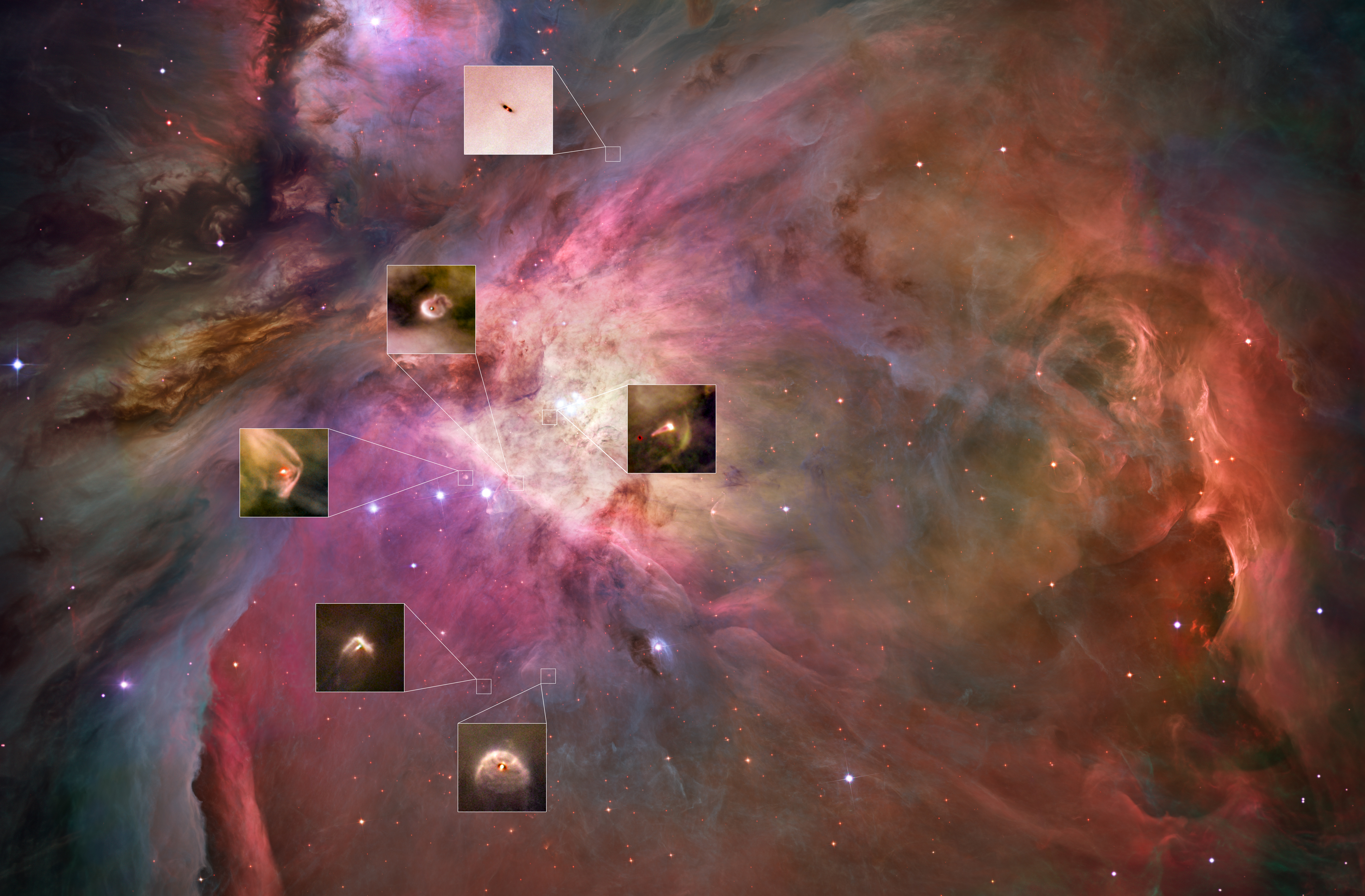2009-12-14
Hubble Spies Planets Forming In Orion
A series of images just released from the Hubble Space Telescope of the Orion Nebula reveal a remarkable array of Proto-Planets, or Proplyds, which are planetary systems caught in the act of forming. A total of 30 close-up views in all providing the best insight yet to how the process works. It is thought that our Earth formed in similar circumstances as gas from a massive nebula collapsed to give birth to our Sun.Proto-planetary discs in close-up in the Orion Nebula
By itself the Orion Nebula is a stunning sight, as can be seen in the above image. Adding the detail of planet formation brings it to life as a fully functional stellar nursery. The incredible colors are the result of the gas and dust being lit up by the star Theta 1 Orionis C, but look closer as Hubble has done and you can clearly see holes punched out by young stars, which are themselves surrounded by gaseous discs. Over time the dust in these discs condenses to form clumps, which then collide to form heavier and larger clumps, and eventually rocky masses. The process is called accretion, and as the collisions continue larger and larger rocks form and become small planetoids. It is a violent time around the star, and as the material forms into ever larger objects, planets and moons arise. The gas is attracted to the rocks as they gain size and gravity. Some form simple atmospheres, while others become gas giants.
With such a rich environment to study there are other incredible sights, like bow shocks ahead of stars as they travel through the nebula. Our Sun is thought to have been ejected from an environment like this a few billion years ago, but even in its relatively open setting we do still have a bow shock, an area where the pressure of the material from the Sun is equal to the pressure of the interstellar gas. This area is known as the Heliopause, and is compressed in the direction we are traveling to form a teardrop shaped bubble called the Heliosphere. Within the much higher pressure of the Orion Nebula, bow shocks are seen far more prominently.
The video below is a fantastic 3D journey into the core of Orion and shows many of the bow shocks. The animation is based on actual Hubble data and the positions of the stars are as accurate as possible.
http://imgsrc.hubblesite.org/hu/db/videos/hs-2001-13-a-low_quicktime.mov
Check out the Hubble site for more images and videos
http://www.spacetelescope.org/news/html/heic0917.html
SpaceHead
Image credit: NASA, ESA, M. Robberto (Space Telescope Science Institute/ESA), the Hubble Space Telescope Orion Treasury Project Team and L. Ricci (ESO)
Subscribe to:
Post Comments (Atom)





4 comments:
Amiable fill someone in on and this mail helped me alot in my college assignement. Say thank you you for your information.
What a great resource!
nice post. thanks.
It's very exiting to find your spacers.blogspot.com blog.
Thanks for taking the time to discuss this, I feel strongly about info and I love to learn more on this. If possible, would you mind updating your blog with more information? It is extremely helpful for me.
Post a Comment